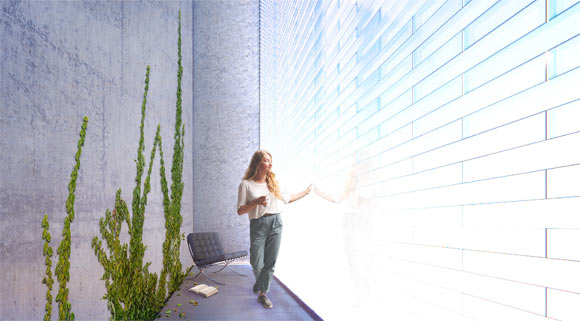Aren't we running out of sand? How is this a sustainable option.
Technology
This is a most excellent place for technology news and articles.
Our Rules
- Follow the lemmy.world rules.
- Only tech related content.
- Be excellent to each another!
- Mod approved content bots can post up to 10 articles per day.
- Threads asking for personal tech support may be deleted.
- Politics threads may be removed.
- No memes allowed as posts, OK to post as comments.
- Only approved bots from the list below, to ask if your bot can be added please contact us.
- Check for duplicates before posting, duplicates may be removed
Approved Bots
We're running out of concrete sand, glass sand doesn't have to be as picky because you're melting it
I wish the article would have mentioned an R-value or at least something to describe the actual efficiency of its insulating ability.
A quick search yields an R value of 9.6-20 per inch for already available aerogel insulating materials. So a standard exterior wall would have a 3.5"(2x4) or 5.5" (2x6) cavity giving R values of 33.6 and 52.8 respectively at the lower efficiency and cheaper options. That is better performance than pretty much any other option, but the cost is like 10-30 times that of other options.
If they are containing the aerogel granules in glass, which seems to be the case, the thermal bridging would be an issue for efficiency. A solid glass block has an R value of 1.15... A triple glazed window has an R value of 7-8.
The better option than glass block would be filling the cavity of a double glazed window with aerogel granules, which would cut down on thermal bridging to the just the sash/casing and would be more economically viable for production.
but the cost is like 10-30 times that of other options
Are you just talking construction costs? How about if you consider the lifetime energy consumption of a building over, I dunno, 50 years? And using zero emission heating, since in 50 years we hopefully are not using fossil fuels for that.
Obviously that's going to vary dramatically depending on the indoor/outdoor temperature delta and future renewable energy costs, so there are too many variables to come up with a number easily, but I could see these bricks being very cheap if you factor int he total cost over the life of the building.
The better option than glass block would be filling the cavity of a double glazed window with aerogel granules
Glass works ok for small windows - but large glass panels are fragile and expensive.
Any time an article references another, immediately jump ship and read the original.
The glass brick has a measured thermal conductivity of 53 mW/m*K and a compressive strength of nearly 45 MPa.”
“This is the highest insulating performance of any brick found in the technical literature, let alone on the market. Additionally, it comes with the property of light transmission.”
https://www.sci.news/othersciences/materials/aerogel-glass-brick-11848.html
For comparison: From Seves Glass Block: "Unlike standard glass blocks that have a thermal transmission coefficient "U"of 2.8 W/sq mt x K), HTI has a "U" value of 1.8 W/(sq mt x K). (https://www.sevesglassblock.com/product/191916-hti-wave-sahara-2s/). So common glass block is 2.8, fancier glass block is 1.8, and this new Aeroblock 0.053!! I think I did my numbers correctly, and DANG! I wan't to start building walls with this stuff tomorrow!!
Also: Get the light & keep the warmth - A highly insulating, translucent aerogel glass brick for building envelopes https://www.sciencedirect.com/science/article/pii/S2352710222016060
Edit: Looks like my numbers are off, above, per @A_[email protected]. Clearly, I'm neither an architect, nor a mathematician.
Anything to get rid of modern vinyl houses.
Masonry is always worth it for housing, we need to go back to building houses that'll still be habitable a century later.
Except earthquake prone areas, and maybe others I'm not thinking if. Wood isn't the problem, cheap+fast wood is.
Or include a picture of the actual material instead of a stock photo of a glass brick stairwell...
The source article has this "visualisation":

From that I'd assume it's not suitable for windows, but it is suitable for taking advantage of natural lighting (not to mention it just looks pretty cool... though I'm not sure about the rest of the architecture in that image).
It's also good at broadcasting to your neighborhood whether or not you're home.
In these times?
You install smart lighting to mimic human presence.
Burglars put up wireless cameras to be sure You left.